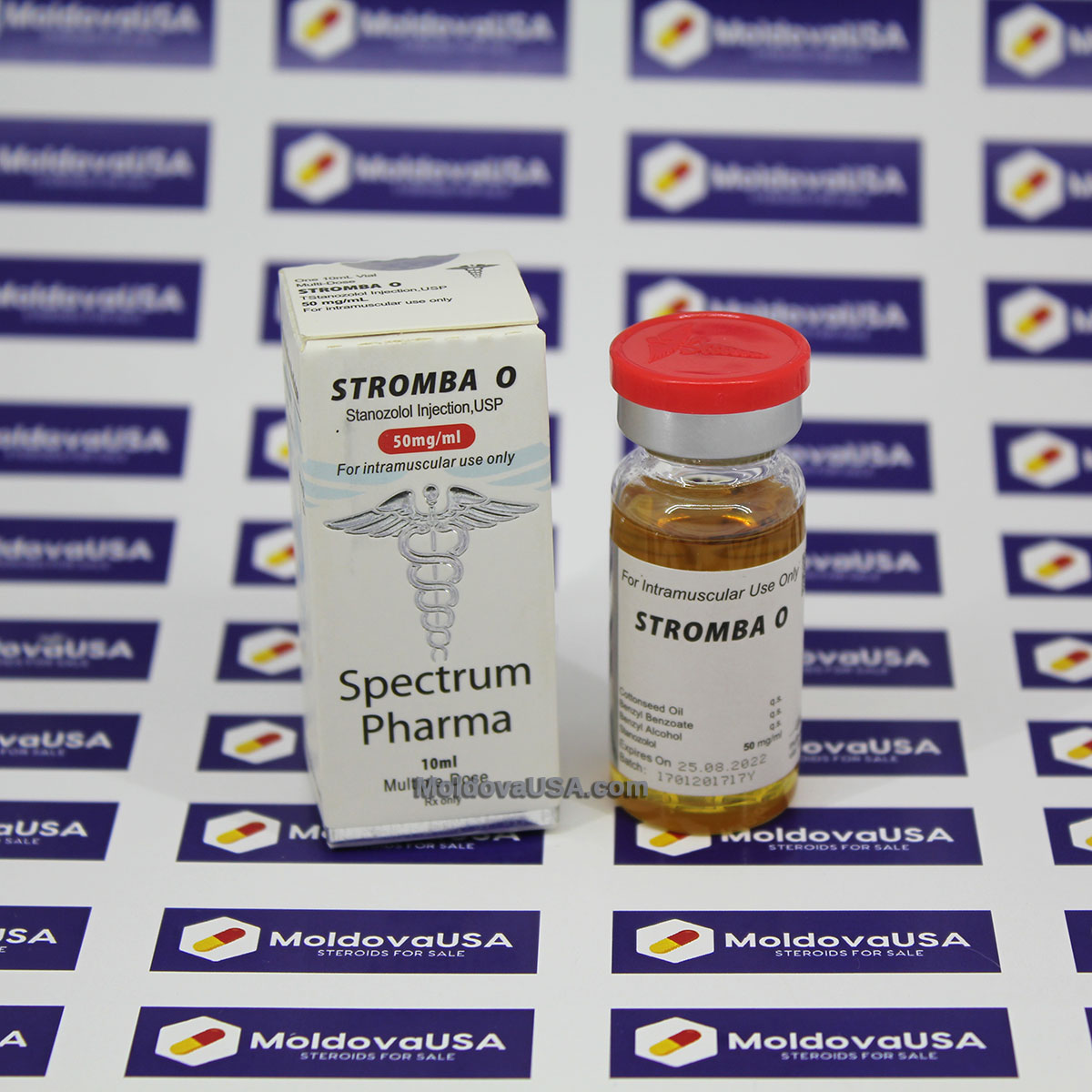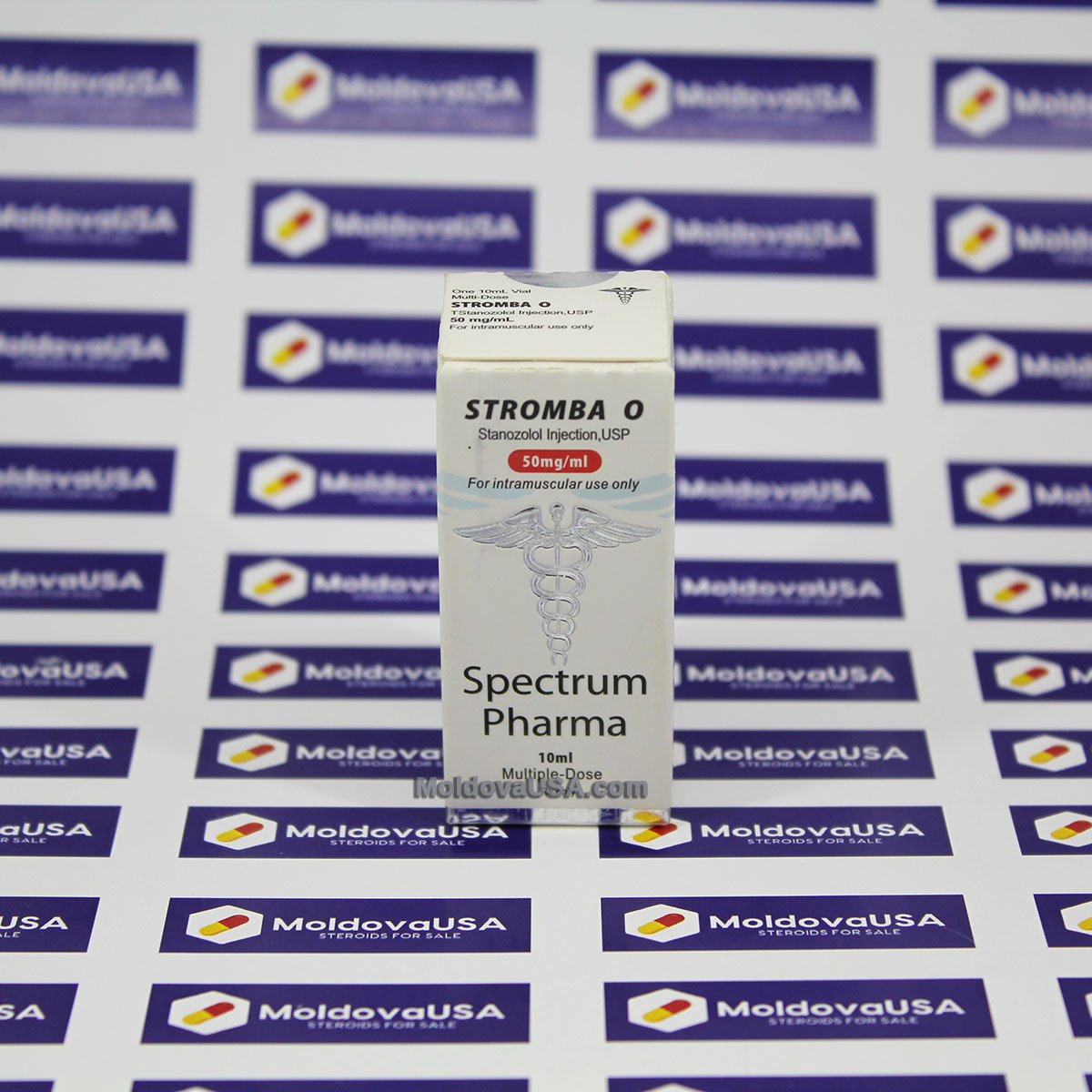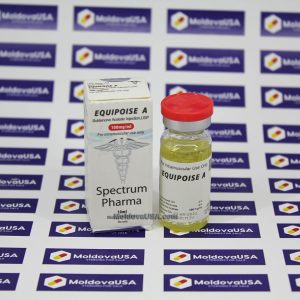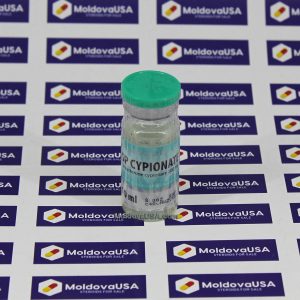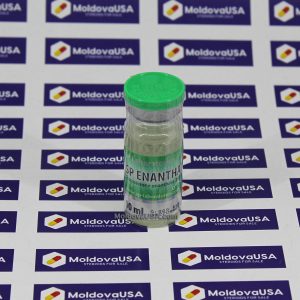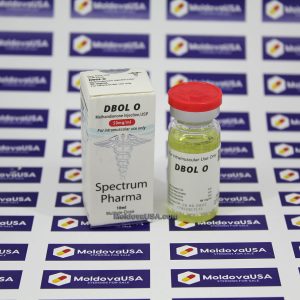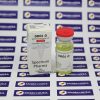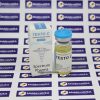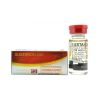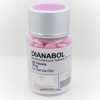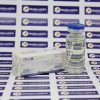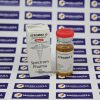Description
Stanozolol (also known as winstrol) is a 17-alkylated dihydrotestosterone derivative that is both anabolic and androgenic. It was created in 1962 by Sterling-Winthrop Laboratories to treat osteoporosis in postmenopausal women by increasing lymphocytes and CD8+ cells while decreasing CD4+ and CD3+. This impact may be helpful in treating autoimmune diseases. Winstrol treats hereditary angioedema. It also affects immune functions.
Stanozolol (abbreviated Stz) is an AAS produced from dihydrotestosterone (DHT). It treats inherited angioedema. It was created in 1962 by Winthrop Laboratories (Sterling Drug) and was authorized for human use by the FDA, but it is no longer available in the USA. It is also utilized on animals. Stanozolol is now only accessible in a few countries. It is administered orally to people and intramuscularly to animals.
Unlike other injectable AAS, stanozolol is offered as an aqueous solution or tablet. The drug’s oral bioavailability is high owing to a C17 alkylation that enables it to bypass first-pass liver metabolism. Because of this, stanozolol is also available as a tablet.
Many athletic organizations, including the International Association of Athletics Federations (IAAF), have prohibited the use of stanozolol as a performance-enhancing substance. Stanozolol is also banned in US horse racing.
History
Winthrop introduced Stanozolol as “Winstrol” in the US in 1962, and Bayer introduced it as “Stromba” in Europe.
In 1962, the Kefauver Harris Amendment was enacted, requiring medication makers to prove their efficacy before approval. Prior to the amendment, the FDA used its Drug Efficacy Investigate Implementation (DESI) program to study and regulate medicines like stanozolol. The DESI initiative aimed to categorize all pre-1962 medicines as successful, ineffective, or requiring additional research. The FDA asked the National Research Council of the National Academy of Sciences to assess drug-related publications.
Following NAS/NRC studies submitted under DESI, the FDA released its findings on the efficacy of specific AAS in June 1970. As supplementary therapy for senile and postmenopausal osteoporosis, and pituitary dwarfism (with a caveat for dwarfism, “when growth hormone is more accessible”), the medicines were categorized as probably effective but lacking significant evidence of efficacy for many other purposes. A lack of efficacy was found for stanozolol as “an adjunct to promote body tissue-building processes… and reverse tissue-depleting processes in such conditions as malignancies and chronic nonmalignancies; debility in elderly patients and other emaciating diseases; gastrointestinal disorders resulting in alterations of normal metabolism; use during pre-operative and post-operative periods.” To cease selling stanozolol for the two areas where it showed likely effectiveness, the FDA allowed Sterling six months to stop marketing it.
The FDA permitted the medication to be sold because there was an unmet need for treatments for osteoporosis and pituitary dwarfism, but Sterling was needed to provide additional evidence.
Since human growth hormone medicines were on the market in 1980, the FDA required that the label for stanozolol and other steroids say: “In senile and postmenopausal osteoporosis. AAS are not useful as main treatment but may be useful as an adjuvant. Diet, calcium balance, physiotherapy, and general health promotion should all be given equal weight “and gave Sterling a deadline to provide evidence for additional indicators. Sterling provided data to the FDA in December 1980 and August 1983 to demonstrate Winstrol’s efficacy against osteoporosis and aplastic anemia. Oncologic and Metabolic Drugs Advisory Committee met twice in 1981 to review osteoporosis data and aplastic anemia data in 1983.
The FDA revoked stanozolol’s approval for treating senile and postmenopausal osteoporosis, as well as increasing hemoglobin levels in aplastic anemia, in April 1984.
Sterling was bought by Eastman Kodak for $5.1 billion in 1988, then sold to Sanofi for $1.675 billion in 1994.
Sanofi had Searle produce stanozolol in the US until October 2002. Sanofi sold the stanozolol business, along with the other two, to Ovation Pharmaceuticals in 2003. The medication was still being used to treat hereditary angioedema at the time. Lundbeck bought Ovation in 2009.
Since 2010, Lundbeck has withdrawn stanozolol from the US market; no other firm markets it as a prescription medication, although it may be acquired via a compounding pharmacy.
To sell stanozolol as a veterinary medication, Pfizer spun off its veterinary business to Zoetis in 2013 and handed the authorizations to Zoetis in 2014.
It is used in veterinary medicine to treat wasting disorders, stimulate red blood cell production, increase hunger, and improve weight gain, although the data is poor. It is used to improve racehorse performance. Aside from its harmful effects on the liver, it causes weight gain, water retention, and difficulties removing nitrogen-based waste products. It is contraindicated in dogs with enlarged prostates due to the risk of tumor growth.:730–371
Until 2009, stanozolol and other AAS were widely used to treat hereditary angioedema attacks: Cinryze, Berinert, ecallantide (Kalbitor), icatibant (Firazyr), and Ruconest. Stanozolol is still used long-term to decrease attacks.
Stanozolol is the generic name of stanozolol in English, German, French, and Japanese, as well as its INN, USAN, USP, BAN, DCF, and JAN. Unofficial synonyms of stanozolol include androstanazol, stanazol, and estanazolol. It was formerly known as WIN-14833.
Stanozolol is now sold in pills and injections. Stanozolol is the second most common oral steroid, behind methandienone. Stanozolol pills have a shorter half-life (9 hours) than injectable stanozolol. Unlike other injectable anabolic steroids, stanozolol is an aqueous suspension of tiny particles of steroid, not an oil solution of an esterified molecule. As a result, its pharmacokinetics deviates from the standard half-life pattern. Instead, a long-lasting impact progressively fades. Action lasts at least a week. Stanozolol particles may stay at the injection site for days. Pharmacom Labs created an oil-based stanozolol that can be combined with any other oil and has no suspension problems. All three variants have high bioavailability.
While stanozolol is a DHT derivative, its action is considerably milder than that of DHT. Stanozolol, a DHT derivative, cannot convert to estrogen, thus aromatase inhibitors are not needed. Stanozolol therefore does not induce water retention. Rather, it is diuretic. Winstrol provides a lean, premium appearance without excessive subcutaneous water retention. This makes it a great steroid to take during cutting cycles to get rid of excess water and fat while building firm, defined muscle. Stanozolol is popular among athletes who compete in strength/speed sports like track and field.
Stanozolol has an intriguing demand among bodybuilders. It has the potential to decrease SHBG levels, allowing other steroids in a stack to develop more efficiently. It increases the level of physiologically active free testosterone in the blood. So always take stanozolol with testosterone. Another explanation is as follows: Winstrol may cause greater tendon brittleness than other anabolic drugs. Winstrol has the ability to dry up joint fluid, causing joint discomfort and damage. Also, stanozolol pills and injections have been shown to alter cholesterol levels. Thus, monitoring the body’s lipid profile (blood work) is advised.
Encouraging endurance, muscular relief, and hardness are all benefits of stanozolol.

